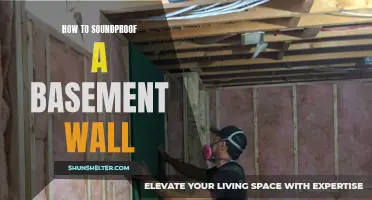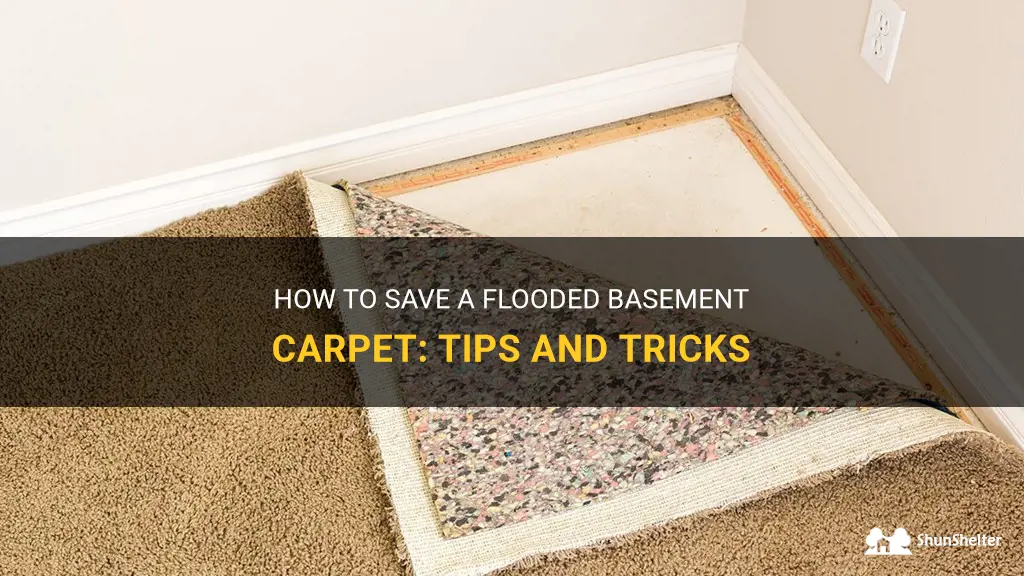
A flooded basement can be a homeowner's worst nightmare, but what if you have expensive carpeting down there? Can it be saved or is it a lost cause? This is a question that many homeowners find themselves asking when faced with water damage in their basements. In this article, we will explore whether a flooded basement carpet can be saved and share some tips on how to salvage your flooring in this unfortunate situation.
What You'll Learn
- How can a flooded basement carpet be saved?
- What are the steps to salvage a flooded basement carpet?
- Is it recommended to try and save a flooded basement carpet, or should it be replaced?
- What are some potential risks or issues that can arise from trying to save a flooded basement carpet?
- Are there professional services available for flooded basement carpet restoration, and what is the cost associated with them?

How can a flooded basement carpet be saved?
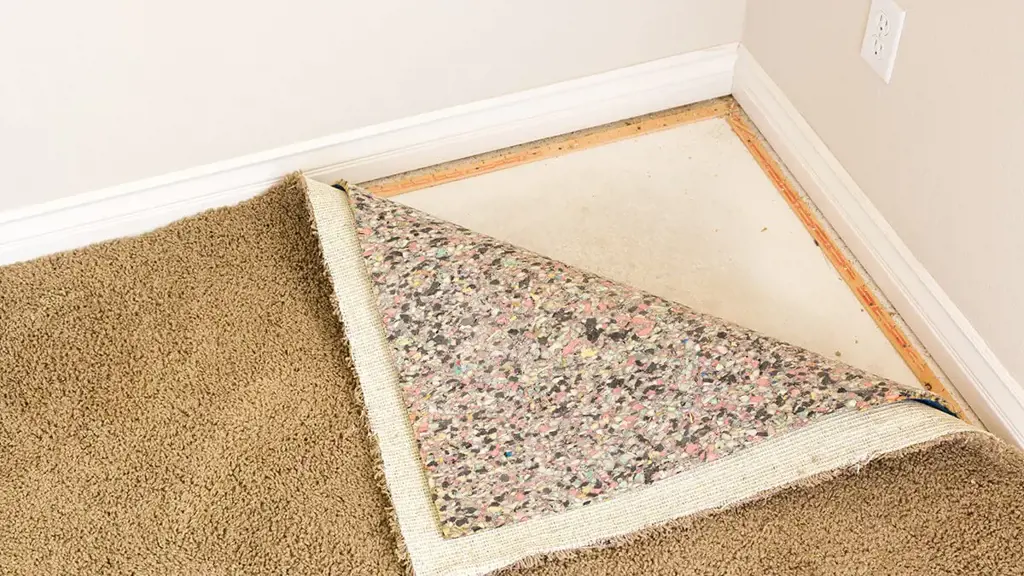
A flooded basement can be a homeowner's worst nightmare, especially when it comes to water damage on the carpet. The good news is that with prompt action, a flooded basement carpet can often be saved. By following a few easy steps, you can prevent further damage, minimize mold growth, and restore your carpet to its pre-flood condition.
Step 1: Remove Standing Water
The first step in saving a flooded basement carpet is to remove any standing water. You can use a wet vacuum or a pump to extract the water. However, if the floodwater is contaminated with sewage or other hazardous materials, it's best to seek professional help for proper cleanup.
Step 2: Drying Out the Carpet
Next, it's important to thoroughly dry out the carpet. Start by opening windows and using fans to increase airflow and ventilation. If you have access to a dehumidifier, run it to remove moisture from the air. It's also crucial to lift the carpet and remove the padding underneath. Place fans or dehumidifiers in the affected area to speed up the drying process.
Step 3: Clean and Disinfect
After the carpet has dried, it's essential to clean and disinfect it to prevent mold growth and eliminate any lingering odors. Use a mild detergent and warm water to clean the carpet thoroughly, avoiding any bleach or harsh chemicals that can damage the fibers. Additionally, consider using a disinfectant spray or a mixture of water and vinegar to kill bacteria and mildew.
Step 4: Steam Cleaning
Once the carpet is clean and disinfected, consider steam cleaning it to remove any remaining residue or debris. Steam cleaning can effectively remove dirt and contaminants from deep within the carpet fibers, leaving it fresh and sanitized. If you don't have access to a steam cleaner, you can rent one from a local home improvement store or hire a professional carpet cleaning service.
Step 5: Professional Inspection
If the floodwater was particularly severe or if the carpet had been submerged for an extended period, it's advisable to have a professional inspect the carpet and assess the extent of the damage. They can determine if any structural or long-term issues need to be addressed and provide guidance on the best course of action.
Prevention Tips to Avoid Future Flooding
To prevent future basement flooding and carpet damage, there are several steps you can take:
- Install a sump pump: A sump pump can help keep your basement dry by removing excess water from the area.
- Improve drainage: Ensure that your gutters and downspouts are clear and functioning properly to redirect water away from your home's foundation.
- Seal cracks and gaps: Seal any cracks or gaps in your basement walls or foundation to prevent water from seeping in.
- Elevate valuable items: If possible, store valuable items and electronics on shelves or raised platforms to avoid contact with floodwater.
- Regular maintenance: Perform regular inspections of your basement for signs of leaks, moisture, or potential water damage. Address any issues promptly to prevent further damage.
In conclusion, saving a flooded basement carpet is possible with quick action and the right steps. By removing standing water, drying out the carpet, cleaning and disinfecting, steam cleaning, and seeking professional assistance if necessary, you can restore your carpet and minimize further damage. Remember to also take preventive measures to avoid future flooding and protect your basement space.
Is Regular Drywall Suitable for Basement Use?
You may want to see also

What are the steps to salvage a flooded basement carpet?
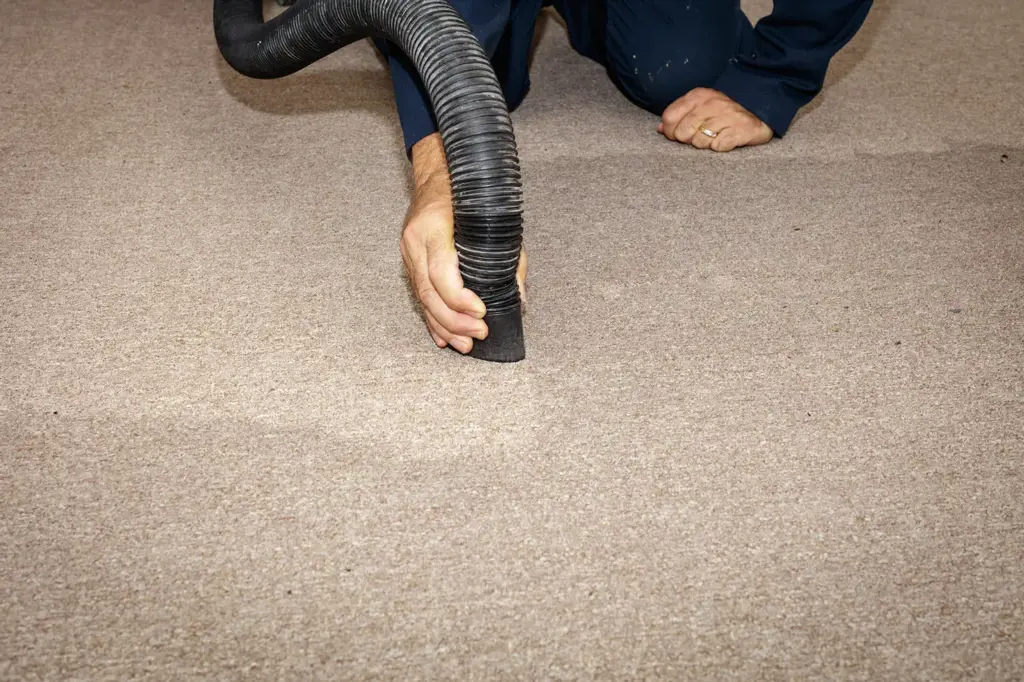
A flooded basement is a homeowner's nightmare. Not only does it cause damage to your property, but it can also be a breeding ground for mold and mildew if not addressed promptly. One of the most challenging tasks after a basement flood is salvaging a carpet. The following steps will guide you through the process of salvaging a flooded basement carpet to minimize the damage and restore your living space.
Safety First:
Before attempting to salvage your flooded basement carpet, ensure your safety by turning off the electricity to the affected area. Water and electricity can be a lethal combination, so take precautions and avoid any potential hazards.
Remove Standing Water:
Using a wet/dry vacuum or a pump, remove as much standing water from the basement as possible. The quicker you can extract the water, the better chance you have of salvaging the carpet and preventing further damage. If the floodwater is too deep, it is recommended to seek professional help for water extraction.
Extract Excess Moisture:
Once you have removed the standing water, use a carpet extractor or a wet/dry vacuum to extract as much moisture as possible from the carpet. Run the machine over the carpet in a systematic pattern, ensuring that every area gets equal attention. Extract until the carpet feels slightly damp to the touch.
Assess the Damage:
Evaluate the extent of damage to the carpet. If the water damage is extensive or if the floodwater was contaminated with sewage or other hazardous materials, it may be best to discard the carpet altogether. In cases where the damage is minimal and the water source was clean, you can proceed with the salvaging process.
Treat with a Biocide:
To prevent mold and mildew growth, treat the carpet with a biocide. Choose a product specifically designed for mold and mildew prevention in damp environments. Apply according to the manufacturer's instructions using a sprayer or a misting device. Allow the biocide to sit for the recommended time before proceeding.
Lift and Air Dry:
Carefully lift the carpet from the padding and tack strips. If the padding is soaked, it should be discarded as it is difficult to salvage and may harbor mold and bacteria. Hang the carpet over a sturdy clothesline or lay it flat in a well-ventilated area, preferably outdoors. Direct fans and dehumidifiers towards the carpet to expedite the drying process. Ensure proper airflow by lifting furniture or propping up the carpet with objects if necessary.
Clean and Disinfect the Subfloor:
While the carpet is drying, thoroughly clean and disinfect the subfloor to eliminate any remaining mold spores or bacteria. Use a mixture of water and bleach or a commercial disinfectant, following the manufacturer's instructions. Scrub the subfloor to remove any visible dirt, mold, or mildew. Allow the subfloor to fully dry before reinstalling the carpet.
Reinstall the Carpet:
Once the carpet is completely dry and the subfloor is disinfected, reinstall the carpet. Start by aligning the carpet edges with the tack strips and pressing firmly to secure it in place. Use a knee kicker or a carpet stretcher to ensure a tight and wrinkle-free fit. Trim any excess carpet using a utility knife.
Monitor for Mold and Mildew:
Even after salvaging your flooded basement carpet, it is crucial to monitor the area for any signs of mold or mildew. Keep an eye out for musty odors, discoloration, or any development of mold spores on the carpet or walls. If you notice any such signs, consult a professional remediation specialist to address the issue promptly.
In conclusion, salvaging a flooded basement carpet requires careful attention and prompt action. By following these steps, you can minimize the damage and restore your carpet to its pre-flood condition. Remember, safety should always be the top priority, and if in doubt, seek professional assistance to ensure a thorough and effective restoration process.
Exploring the Possibility: Can a Ranch House Have a Basement?
You may want to see also

Is it recommended to try and save a flooded basement carpet, or should it be replaced?
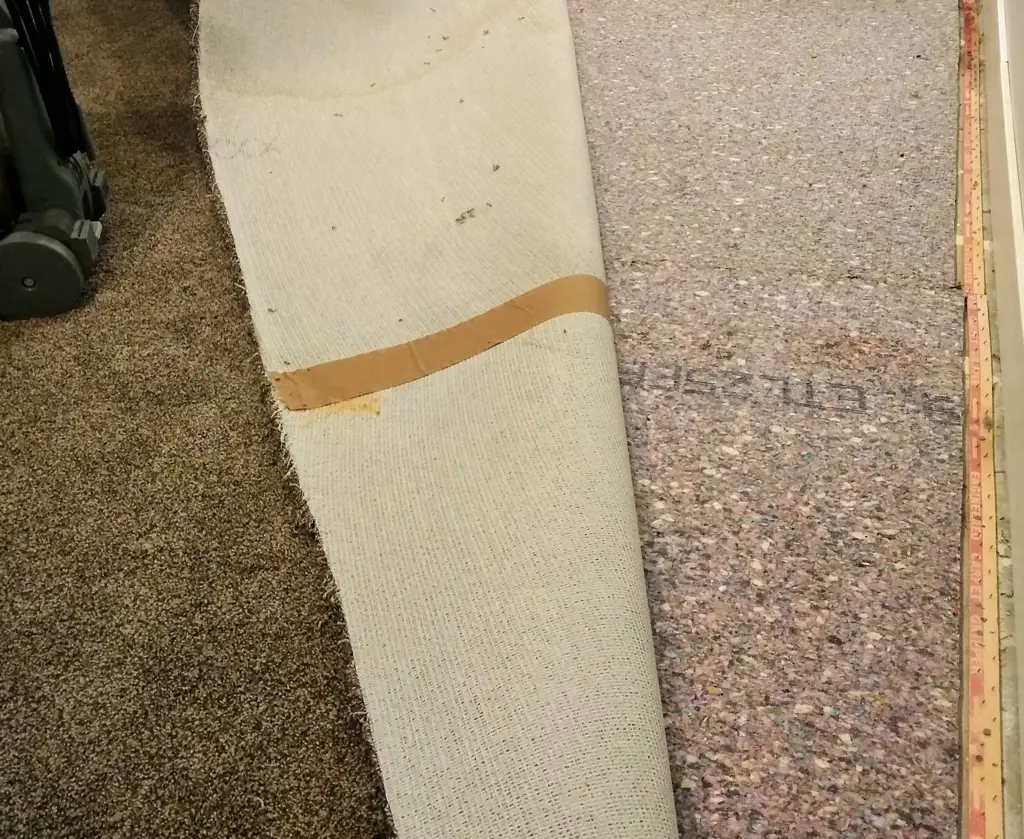
A flooded basement can be a homeowner's worst nightmare, and one of the first things that comes to mind is the damage it can cause to the carpets. The question arises - should you try to save the flooded basement carpet or is it best to replace it?
When a basement floods, whether it is due to heavy rainfall or a burst pipe, the first step is to remove the water as quickly as possible. This can be done using a wet vacuum or a sump pump. Once the water has been removed, it is important to act fast to prevent mold and mildew growth.
If the flooding was caused by clean water, such as a burst pipe, there is a greater chance of salvaging the carpet. However, if the water is contaminated, such as from a sewer backup, it is best to replace the carpet to avoid health risks.
To save a flooded carpet, the following steps can be taken:
- Remove the carpet from the basement: This step is crucial to allow the carpet and the floor to dry properly. Roll up the carpet and remove it from the affected area.
- Dry the carpet: Lay the carpet out in a dry and well-ventilated area, ideally in sunlight. Use fans or dehumidifiers to speed up the drying process. It is essential to completely dry the carpet to prevent mold growth.
- Clean and disinfect the carpet: Once the carpet is dry, thoroughly clean and disinfect it. Use a carpet cleaner or a mixture of warm water and mild detergent to remove any dirt or debris. Then, use a disinfectant to kill any potential bacteria or mold spores.
- Inspect the carpet: After cleaning and disinfecting, carefully inspect the carpet for any signs of mold or water damage. Look for discoloration, musty odors, or a damp feel. If there are any signs of mold or damage, it is best to replace the carpet.
- Dry the basement: While the carpet is being cleaned and dried, it is crucial to also dry the basement thoroughly. Use fans, dehumidifiers, and open windows to allow for proper ventilation and to prevent further moisture buildup.
In some cases, it may be better to replace the flooded basement carpet entirely. This is especially true if the carpet is old, worn, or was previously damaged. It is also recommended to replace the carpet if the flooding was due to contaminated water to ensure the safety and health of the occupants.
It is important to note that saving a flooded basement carpet does not guarantee that it will regain its original condition. There may still be lingering odors or visible damage. If this is the case, it may be worth considering replacing the carpet for a fresh start.
To conclude, saving a flooded basement carpet is possible, but it requires quick action and thorough cleaning and drying. It is essential to assess the extent of the damage, the type of water involved, and the overall condition of the carpet before deciding whether to save or replace it. Ultimately, the health and safety of the occupants should be the primary concern when making this decision.
Is it Possible to Install a Mini Split Condenser in the Basement?
You may want to see also

What are some potential risks or issues that can arise from trying to save a flooded basement carpet?
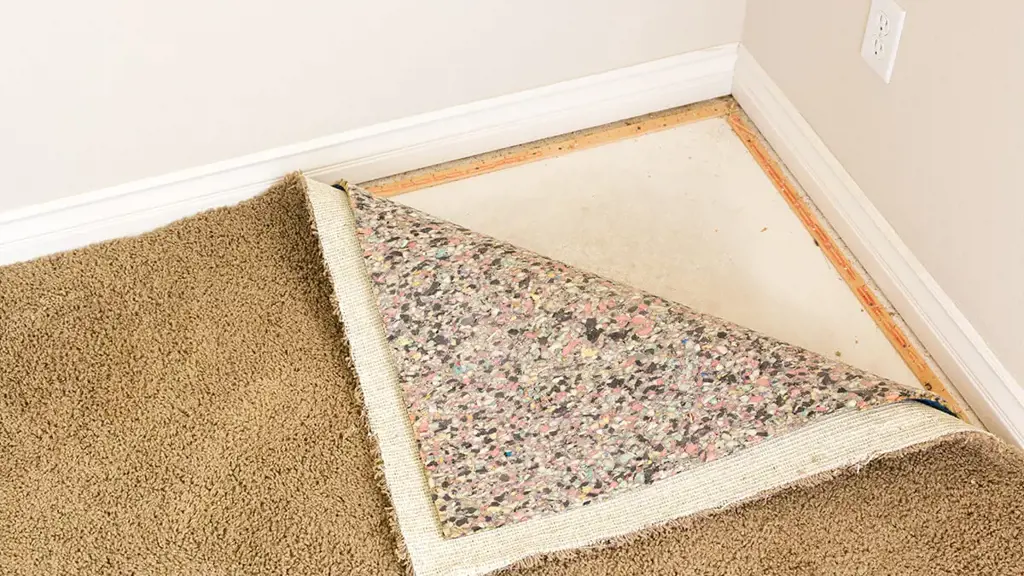
Many homeowners face the unfortunate event of a flooded basement. This can happen due to heavy rain, a burst pipe, or other plumbing issues. One of the main concerns when dealing with a flooded basement is the condition of the carpet. While it may be tempting to try and save the carpet, there are some potential risks and issues that can arise during the process.
One of the primary concerns is mold growth. When water sits for an extended period, it creates a breeding ground for mold and mildew. This can be hazardous to your health, as exposure to mold can cause respiratory issues and allergic reactions. Attempting to save a flooded basement carpet without proper precautions can result in the spread of mold spores throughout your home.
Another potential issue is the damage to the carpet padding. In many cases, the padding beneath the carpet can become saturated with water. This can be challenging to dry out completely and may need to be replaced. If the padding is left wet, it can lead to further issues, including the growth of mold and an unpleasant odor.
Additionally, attempting to save a flooded basement carpet without the proper knowledge and equipment can result in further damage to the carpet itself. Improper drying techniques and insufficient airflow can lead to shrinking, warping, or delamination of the carpet. These damages may require professional help and can be costly to repair or replace.
To effectively save a flooded basement carpet, it is essential to follow a step-by-step process. First, it is crucial to remove as much water as possible using a wet/dry vacuum or a carpet extraction machine. This helps to minimize the amount of moisture that remains in the carpet and prevents further damage.
Next, it is important to thoroughly dry the carpet and the surrounding area. This can be done using fans, dehumidifiers, and open windows for proper airflow. It is essential to allow the carpet to dry completely, which may take a few days. Using moisture meters can help determine when the carpet is free of moisture.
If the carpet padding is heavily saturated or if there are concerns about mold growth, it is advisable to remove and replace it. This ensures that any potential mold or mildew is eliminated and reduces the risk of future problems.
In some cases, it may be necessary to seek professional assistance to save a flooded basement carpet. Professional water damage restoration companies have the expertise and equipment to effectively handle the situation and mitigate any risks or issues. They can properly assess the damage, provide appropriate drying techniques, and advise on the best course of action.
In conclusion, while it may be tempting to try and save a flooded basement carpet, there are several potential risks and issues that can arise. Mold growth, damage to the carpet padding, and further damage to the carpet itself are significant concerns. Following a step-by-step process, including proper water extraction and thorough drying, can help minimize these risks. In some cases, seeking professional assistance may be necessary to ensure the best outcome.
Effective Ways to Eliminate Spiders in Your Basement
You may want to see also

Are there professional services available for flooded basement carpet restoration, and what is the cost associated with them?
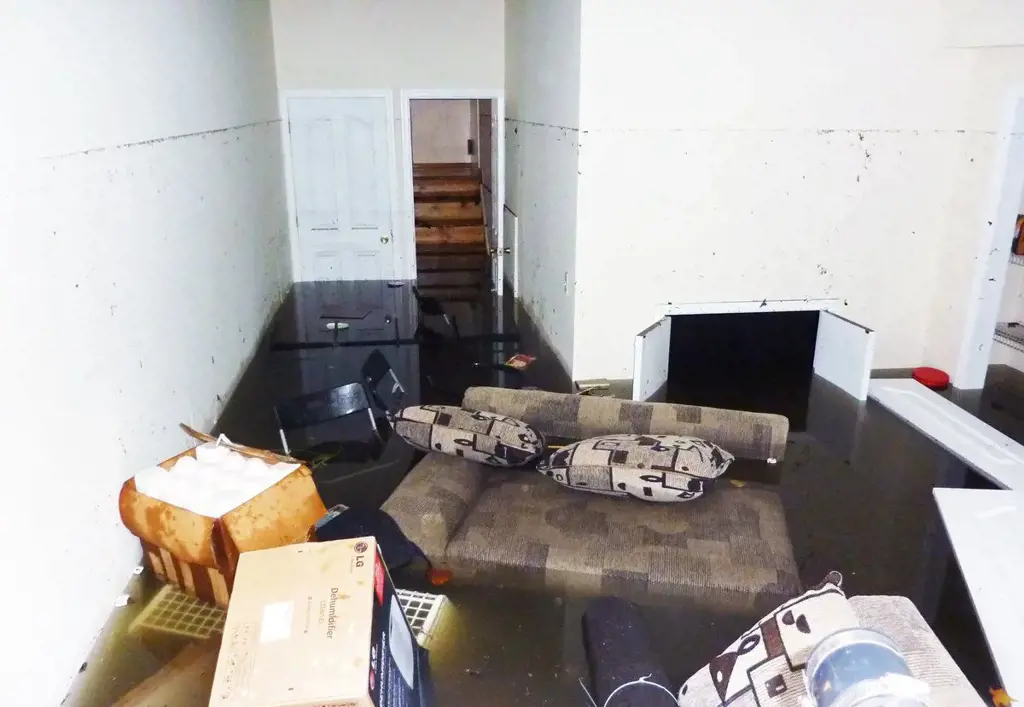
When a basement floods, one of the most common places for water to accumulate is in the carpet. This can lead to significant damage if not addressed promptly. Fortunately, there are professional services available for flooded basement carpet restoration.
The process of restoring a flooded basement carpet involves several steps. First, the water must be removed from the carpet and the basement itself. This can be done using specialized equipment such as pumps and wet/dry vacuums. It is important to remove as much water as possible to prevent further damage and mold growth.
Once the water has been extracted, the carpet will need to be thoroughly cleaned and sanitized. This typically involves using a combination of hot water extraction and steam cleaning to remove dirt, bacteria, and odors. Professional cleaners have access to powerful equipment and cleaning solutions that can effectively restore the carpet to its pre-flood condition.
In some cases, it may also be necessary to remove and replace the carpet padding. This is because padding is highly absorbent and tends to hold onto moisture, which can lead to mold growth and unpleasant odors. A professional restoration service will be able to assess the condition of the padding and determine whether it needs to be replaced.
The cost of professional flooded basement carpet restoration can vary depending on several factors. These include the size of the basement, the extent of the water damage, and the type of carpet being restored. On average, homeowners can expect to pay between $500 and $1,500 for this service. However, it is important to keep in mind that this is just an estimate and the actual cost may be higher or lower depending on the specific circumstances.
While it is possible for homeowners to attempt flooded basement carpet restoration on their own, it is generally recommended to hire a professional service. This is because professionals have the experience, knowledge, and equipment necessary to properly clean and restore the carpet. Attempting to clean the carpet without the proper tools and techniques can lead to further damage or inadequate cleaning, which can result in the need for costly repairs or replacement.
In conclusion, there are professional services available for flooded basement carpet restoration. These services involve removing the water, cleaning and sanitizing the carpet, and potentially replacing the padding. The cost of these services can vary depending on the size of the basement, the extent of the damage, and the type of carpet being restored. While it is possible to attempt this restoration on your own, it is generally recommended to hire a professional for the best results.
Can You Put a Manufactured Home on a Basement?
You may want to see also
Frequently asked questions
Yes, a flooded basement carpet can often be saved if the necessary steps are taken quickly. The first step is to remove as much water as possible from the carpet by using a wet/dry vacuum or towels. Once the bulk of the water has been removed, it's important to thoroughly dry the carpet and the underlying padding to prevent mold and mildew growth. This can be achieved by using fans, dehumidifiers, and open windows to increase air circulation and promote drying.
If your basement carpet is flooded, it's important to act quickly to minimize damage and prevent mold growth. Start by removing any standing water using a wet/dry vacuum or towels. Once the water is removed, thoroughly dry the carpet and padding by using fans, dehumidifiers, and open windows to increase air circulation. It may also be necessary to elevate the carpet off the floor to allow air to reach the underside. If the flooding was caused by a sewage backup or contaminated water, it's recommended to hire a professional cleaning service to ensure proper sanitation.
To prevent mold growth after a basement carpet floods, it's essential to thoroughly dry the carpet and padding as quickly as possible. Use fans, dehumidifiers, and open windows to increase airflow and remove moisture from the area. It's also important to regularly check the carpet and surrounding areas for any signs of mold, such as a musty odor or visible growth. If mold is detected, it's best to seek professional help to safely remove and remediate the mold. Additionally, addressing the cause of the flooding, such as fixing any leaks or improving drainage systems, can help prevent future incidents and reduce the risk of mold growth.


